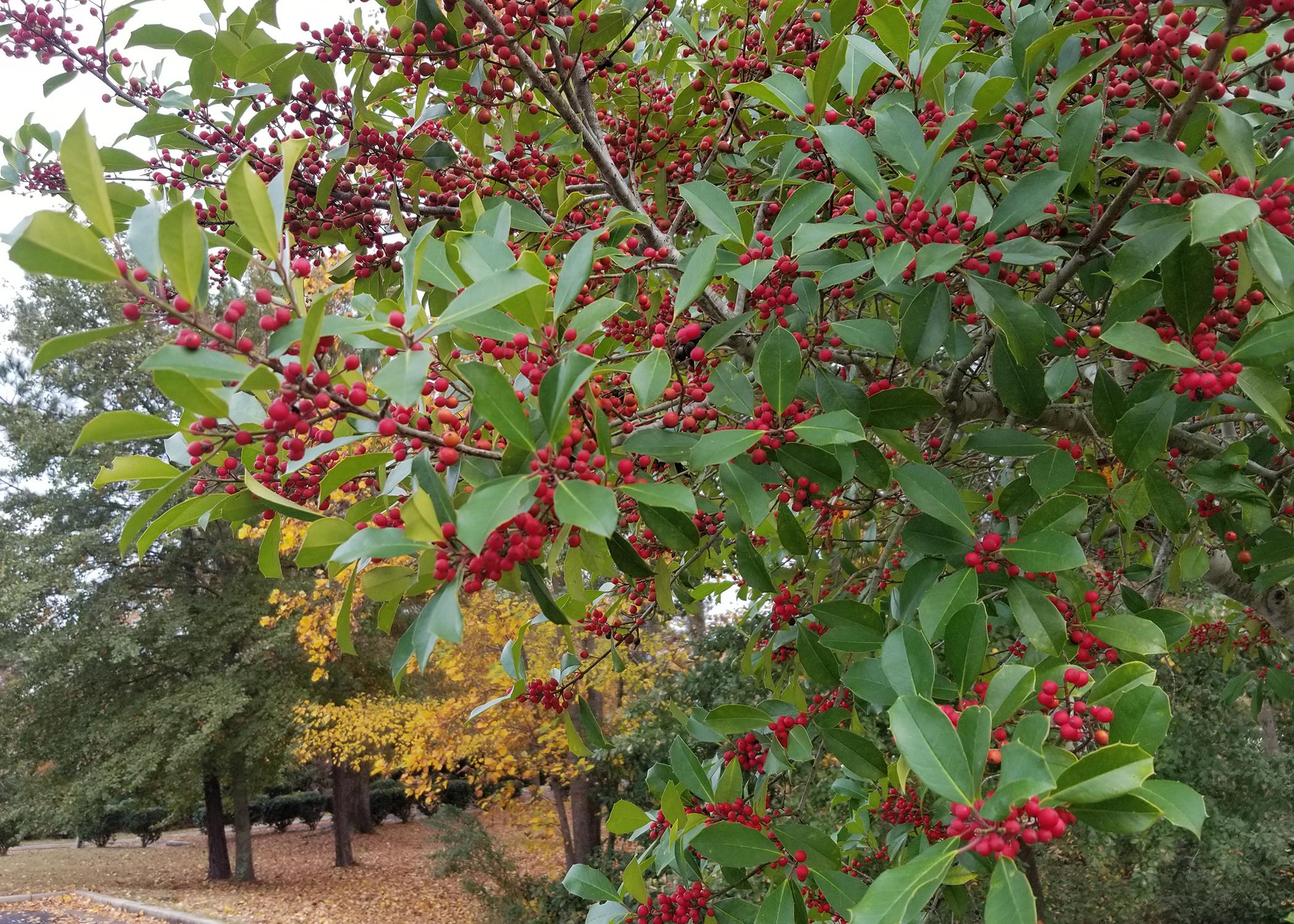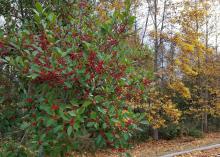Information Possibly Outdated
The information presented on this page was originally released on December 2, 2019. It may not be outdated, but please search our site for more current information. If you plan to quote or reference this information in a publication, please check with the Extension specialist or author before proceeding.
Savannah hollies decorate landscapes past Christmas
I love when the calendar strikes December 1, because it means we are officially in the Christmas season. Now, I know it seems like many stores have had their holiday decorations out since before Labor Day, but none of that counts until we get to December.
Lately, I’ve been promoting cool-season annuals for winter color, and my advice for those plants holds. But one group of landscape plants needs some extra attention paid to it this time of year. Of course, I’m talking about the hollies.
Today, I want to talk to you about a reliable favorite of mine for many years, the Savannah holly.
This time of year, these plants are loaded down with red berries. With its red berries and green leaves, the holly may be the official Christmas plant of the landscape. Plus, it is a superb and versatile evergreen plant to grow in our Mississippi gardens and landscapes all year.
Savannah holly is known botanically as Ilex x attenuata and is a hybrid of two of our native hollies, American holly (Ilex opaca) and dahoon holly (Ilex cassine). It is also a close cousin to another great landscape holly, Foster’s holly.
Savannah hollies are moderate growing large shrubs or small trees with the potential to reach up to 35 feet tall. They make great screens or are great-looking landscape specimens. These hollies naturally have a pyramidal growth habit.
Their summer foliage is typically a dull, light green. Leaf margins have soft spines of varying numbers on each leaf. These spines are representative of the American holly parent. When grown with other hollies that have dark, glossy green foliage, Savannah holly can appear to be a bit yellowish. But the foliage color is perfectly normal.
During the winter months, when exposed to cold weather, the foliage, like many of our evergreen landscape plants, may become a bit yellowish-purple or be tinged with red. The heavy berry production can also lead to leaf yellowing, also called chlorosis.
The berries can be a real showstopper from November through March. Tight clusters of berries are formed towards the ends of the branches. The berry color is reminiscent of fluorescent red, and each berry is a quarter-inch or more in diameter.
All hollies are dioecious, with each plant having male and female parts. For good berry production, male and female plants must be in relative proximity. It’s a good thing that hollies are considered promiscuous in regard to pollination!
Native American hollies are common across the state and can provide the requisite pollination for the Savannah, as well as other fruiting hollies.
Savannah hollies tolerate almost any well-drained landscape soil. These plants also tolerate confined root zones because of their small root diameter and great number of roots. Cities often use Savannah hollies in median plantings, which is a testament to their toughness.




